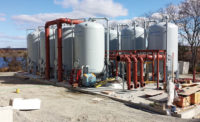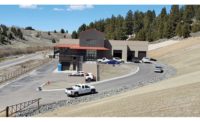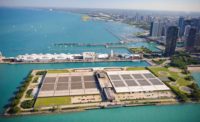Additional water treatment projects Suburban Austin residents are not alone in needing water. Projects are under way in nearly all parts of the state.
Pepper-Lawson of Houston is working on a $35-million expansion of the Jefferson Street Water Treatment Plant for the city of Laredo, and in a joint venture with Oscar Renda Contracting of Roanoke, it’s constructing the $168 million, 80-mgd expansion of the Southeast Water Plant for the city of Houston.
Bennie Fretwell, Pepper-Lawson Construction area manager for Central Texas Waterworks, anticipates more water-treatment plant work with the continued population growth in the state and the funding available through the American Recovery and Reinvestment Act.
The Texas Water Development Board received $339.8 million in stimulus money. By mid-February, the board had funded $154.2 million in water projects and $171.9 million in wastewater projects. The largest drinking-water award, at $48 million, went to Laredo for water capital improvements.
McCarthy Building Cos. of Dallas began construction in August on the $47-million, 12-mgd, surface-water Fort Worth Westside Water Treatment Plant. The project includes operations and ozone-control buildings; an ozone-contact basin, a flocculation basin, sedimentation basin and washwater-recovery basins; recycle pump station; membrane- treatment facility; and an aboveground, steel storage tank.
The company has completed excavation for the entire project and begun placing the 19,000 cu yds of concrete, says Steve Gotschall, project director for McCarthy. The project requires 5 mi of pipe onsite and 1 mi of duct bank. It is scheduled for completion in January 2012.
“A lot of the expansions are going with surface water, pulling off the lakes, which is what they were built for,” Gotschall says.
McCarthy also has a $41-million, 1,300-acre wetlands construction for the Tarrant Regional Water District, which services Fort Worth, Arlington and Mansfield. The water will flow from the Trinity River through a series of ponds, naturally filtering out phosphates before being pumped into the Richland-Chambers Reservoir for use by the water district.
“There’s a push to go from underground water to surface water and finding more resources for more populated areas,” says Mike Uldrich, vice president of operations for McCarthy’s Civil Group. “It’s to handle future growth and add capacity.”





Post a comment to this article
Report Abusive Comment